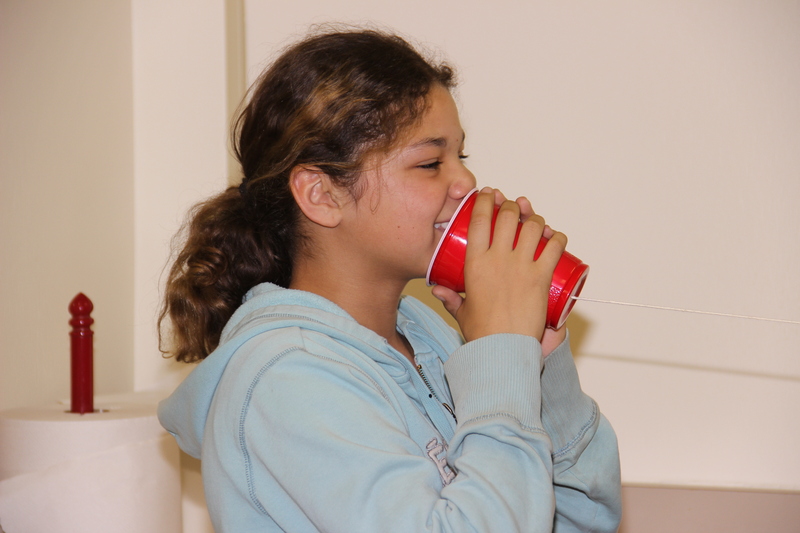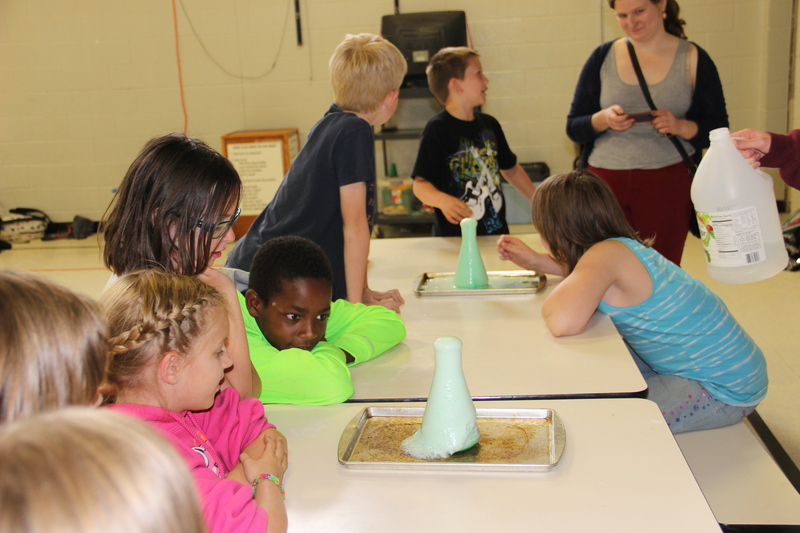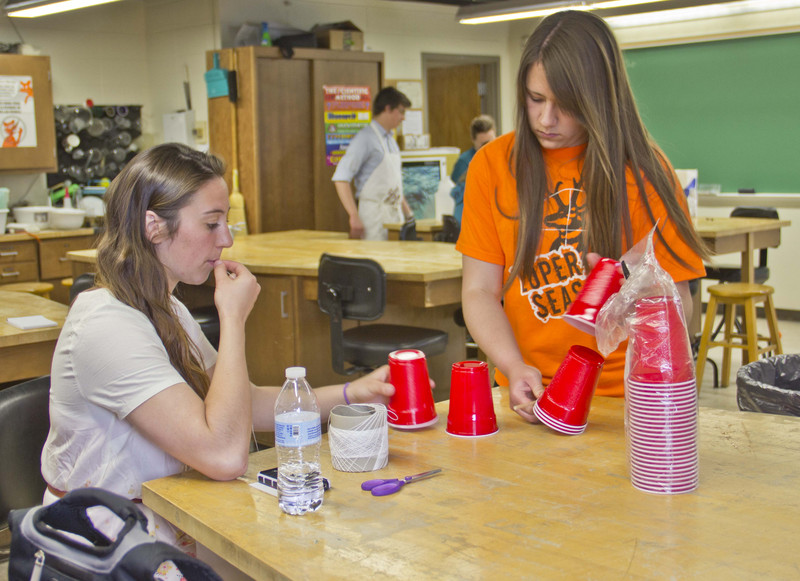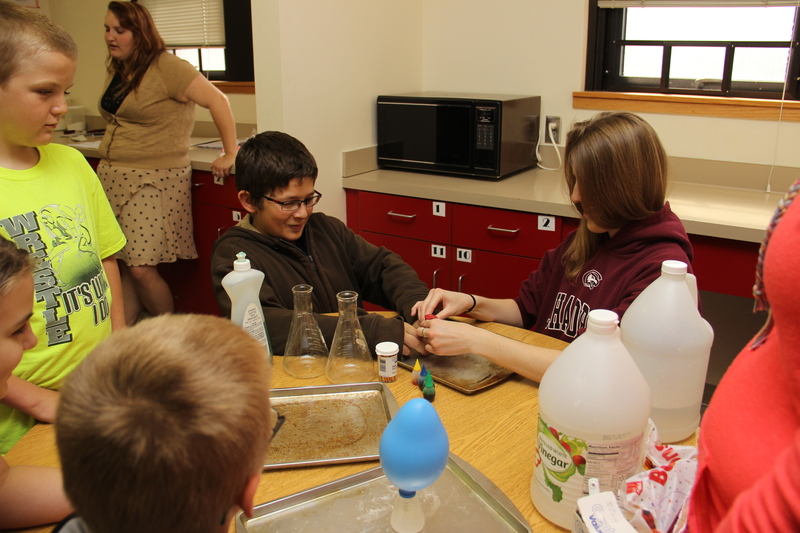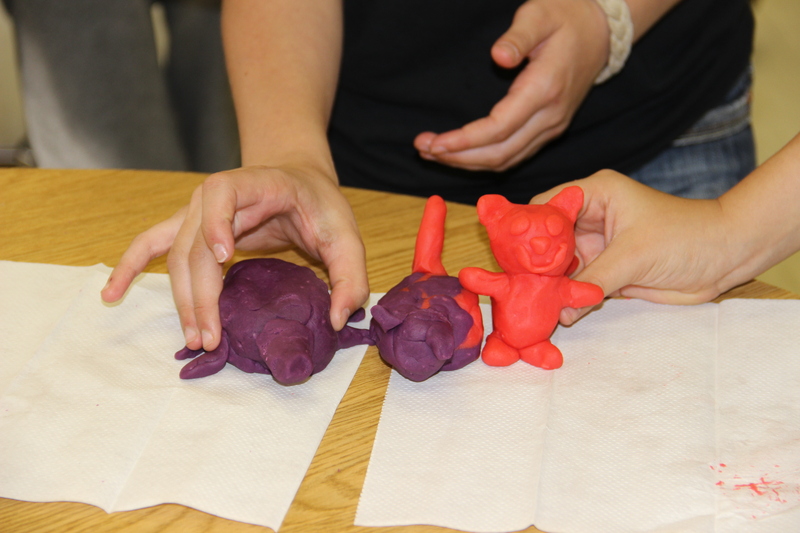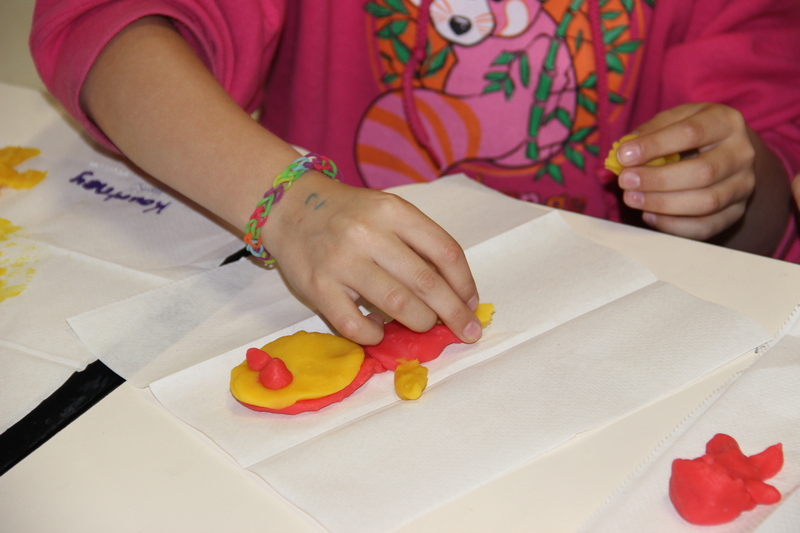NASA grant helps future elementary teachers make science fun
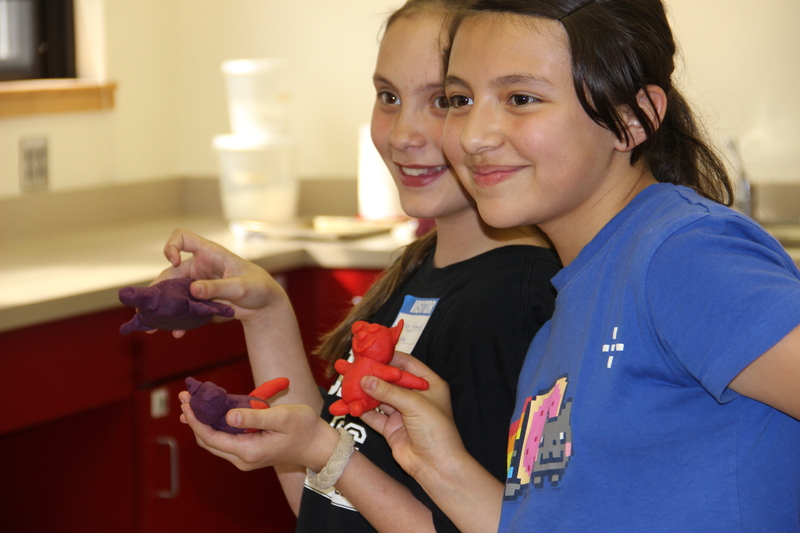
A group of six Chadron State College elementary education majors met four hours a week this semester with three fellow student science mentors in a program funded by NASA. Their laughter, squeals and screams sometimes punctuated the otherwise quiet halls of the Math and Science building.
The pre-service teachers did not received credit hours for the work, but are confident their future students will benefit by exposure to the fun, interactive science experiments they have created and recorded in blogs.
Monday, a culminating activity of the project took place when the pre-service teachers and their mentors, along with school staff, met with third and fourth graders at Chadron Intermediate School. The children were led through a series of exciting and visually memorable experiments about genetics, water and sound waves, gases and chemical reactions.
Last week, the same projects were shared with fifth and sixth grade students at the Chadron Middle School.
The CSC students involved are Staysha Adams of Scottsbluff, Neb., Diane Baluska of Kimball, Neb., Dani Buckley of Palmer, Alaska, Nicholle Lang of Scottsbluff, Neb., Steffie Sandlian of Torrington, Wyo., and Kelsey Willnerd of Hastings, Neb.
The mentors are fellow CSC students, Maggie Darnell of Chadron, David Keim of Bridgeport, Neb., and Sarah Blackstone of Colorado Springs, Colo. They have led future educators through the curriculum development program thanks to a $5,000 NASA Nebraska Higher Education mini grant written by CSC education faculty member Dr. Linda Brown. The grant funds were used for mentor stipends and supplies.
The name of Brown’s successful application was “Nothing as Awesome as Science – Absolutely.” She is in the process of submitting another application for a second, similar grant this fall titled “Nothing as Awesome as Science – Again.”
Brown hopes for six to eight mentors and 30 elementary education majors to participate in the 2014-15 academic year.
Two goals of the NASA Nebraska Space Grant Consortium include “Hands-on and training experiences for teachers” and “Curriculum and course development activities.” Brown feels hopeful about the grant application since the CSC program supports these goals.
Other CSC faculty who helped oversee the project include Dr. Ann Buchmann, Dr. Mike Leite, Jennifer Balmat, Dr. Ann Petersen, Dr. Doug Poole, Dr. Beth Wentworth, and Dr. Wendy Jamison.
Darnell said the following critical description of the current condition of many K-12 science classrooms was presented at a recent conference: “We have 19th Century teachers using 20th Century textbooks trying to teach 21st Century students.”
“We also heard that 90 percent of students forget 90 percent of what they learn within 90 days. This is not OK. Experiential learning like this should help change those stats,” she said.
Curriculum for the venture was developed by the three student science mentors with some units adapted from Jamison’s and Balmat’s classes.
“Our goal is to challenge our future students. We want to change the way science is taught, so it’s not just memorization but more an approach of understanding why things work the way they do,” Adams said.
Buckley said, “This has been a great refresher from my elementary science experience. Many of the experiments, activities, and projects we have done during the NASA program have reminded me of my childhood and all of the science concepts we covered.”
Darnell established a blog “round up” which includes summaries of the education students’ blogs and links to them.
"It's a neat gathering of things in one place. It’s a collection of resources such as projects, thoughts and feelings,” Darnell said.
The address is lechatdu503.wordpress.com. Sink or Swim, Don’t Suck on the Bones, Up and Up, and Making Waves are a few of the titles of the pre-service teachers’ blog entries.
Willnerd’s blog was picked up by Kuato Studios and used in the online journal’s science section.
Adams came to class in late March telling how a first-year high school biology teacher liked her blog and commented about one of the units.
The unit involved several batches of Rice Krispies treats being altered so children can observe that batches which taste the best disappear first, providing a lesson about natural selection.
Darnell said, “This is what blogs are for. They are for sharing ideas between people and making connections that would never have existed before. It’s the coolest thing.”
Category: Campus News, Physical and Life Sciences, Student Awards & Achievements


